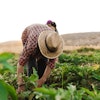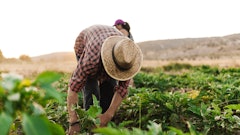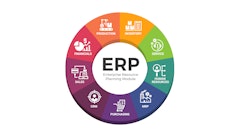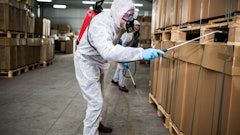
Consumers today are becoming increasingly conscious of their food supply chains, from the production stages on the farm to the ways their food is processed, packaged and distributed before consumption. What used to be a “nice-to-have” for food and beverage businesses has now become a key driver in attracting and retaining modern consumers. Health and sustainability matters have become more significant consumer priorities, with over 70% of consumers willing to pay at least 5% more for organic foods or foods that are sustainably sourced.
Regulations that limit emissions or reduce chemical residues across the agricultural industry exist for a reason: to protect human health, the environment and the planet. Yet despite the many safeguards in place, not every practice within the agricultural system aligns with long-term sustainability goals. One of the most pressing examples is the continued overuse of antibiotics in farming. Introduced to the agriculture industry during the middle of the 20th century, the continued and prevalent use of antibiotics in farming has had downstream effects – both figurative and literal – that put humans and their environments at risk.
Like pesticide use, overplanting and water mismanagement, an overreliance on antibiotics has become one of the many practices now baked into the agrifood sourcing infrastructure that create as many potential harms as they do benefits. Additionally, despite specific regions around the world reporting declines in antibiotic use to adhere to updated policies and regulations, the global use of antimicrobials is still expected to rise. A better way forward exists and it starts with a better understanding of the problem.
Why antibiotics in farming isn’t a sustainable solution
Less than a century has passed since antibiotics were first administered to livestock, after they were found to help expedite livestock growth and prevent animal disease, specifically as large-scale and highly industrialized farming transformed traditional farming processes globally. The use of mass amounts of antibiotics allowed farmers and industrialized agricultural systems to improve the health of animal populations being raised in confined spaces while also speeding up the production timeline.
Today, roughly 70% of all antibiotics are consumed by animals – estimated at 99,502 tonnes (95% CI 68,535–198,052) of veterinary antimicrobials consumed globally as recently as 2020. This misuse and overuse increases the development of antimicrobial resistance in farm livestock, which then creates conditions for the resistant bacteria to enter human food and ecological systems through waste and sewage runoff into our water and soil. Antibiotic-resistant bacteria have even begun to create “superbugs”. According to a scientific article published by The Lancet in 2024, it is estimated that there are going to be 1.91 million deaths directly attributed to antimicrobial resistance and 8.22 million deaths associated with antimicrobial resistance by 2050.
Left unchanged, this would only scratch the surface of what would quickly spiral into a crisis for humanity. As stated in an article published by the National Library of Medicine, “The practice of medicine and the state of public health would be catastrophically affected if antibiotics were not generally effective in treating bacterial illnesses.” In other words, if we don’t soon address our overuse of antibiotics – a 20th Century innovation – we risk sending global health back to levels not seen since the 19th century.
A sustainable scientific alternative to antibiotics
In an agricultural model built for scalability, too little consideration was given to its sustainability at first. This wasn’t a feature deliberately built into the system but rather a problem gradually discovered over time. Often, solutions required for upscaling can raise concerns about long-term implications or risks that initially may present as intractable. Today, many agricultural stakeholders are looking for viable ways to combine successful traditional methods with modern solutions in order to create an alternative that addresses the concerns of all parties.
Take antibiotic-free dairy production, for example. An antibiotics alternative – peptides, derived from proteins within milk itself – can strengthen cows’ natural immune systems to help them prevent and treat mastitis (one of the most prominent dairy diseases requiring antibiotic treatments in the dairy industry) while leaving no harmful residues in the final product. These solutions also help manage the development of pathogens such as E-coli, which become more resistant to antibiotics when continuously exposed to them over time. Further, peptides derived from milk are safe for human food consumption, and clinical trials have proven that they actually increase milk yields and improve overall quality.
Peptides have other benefits in dairy farming as well. A certain amount of milk produced by antibiotics-treated cows is currently cast aside due to the harmful residues it contains. But peptides-treated dairy cows can produce milk that is safe for human consumption, preventing critical product loss. Additionally, when compared to antibiotics, peptides help reduce greenhouse emissions from cows, creating a knock-on effect – less emissions per cow from a smaller herd able to produce similar yields makes for a significant overall decrease in animal emissions, helping farmers achieve industry standards.
Ethical sourcing practices are sometimes viewed with skepticism or realism by the agricultural community, deemed as an expensive or complicated threat to traditional systems. But peptides, among other solutions, are administered using exactly the same methods as farmers currently treating cows with antibiotics. A natural solution that boosts the immunity of cows, protects the health of humans, increases yields and reduces greenhouse gas emissions also requires no investment in infrastructure overhaul. Ethical sourcing doesn’t have to be an inconvenience or crushing expense. Through innovation, it can even improve existing farming practices and agrifood operations.


















